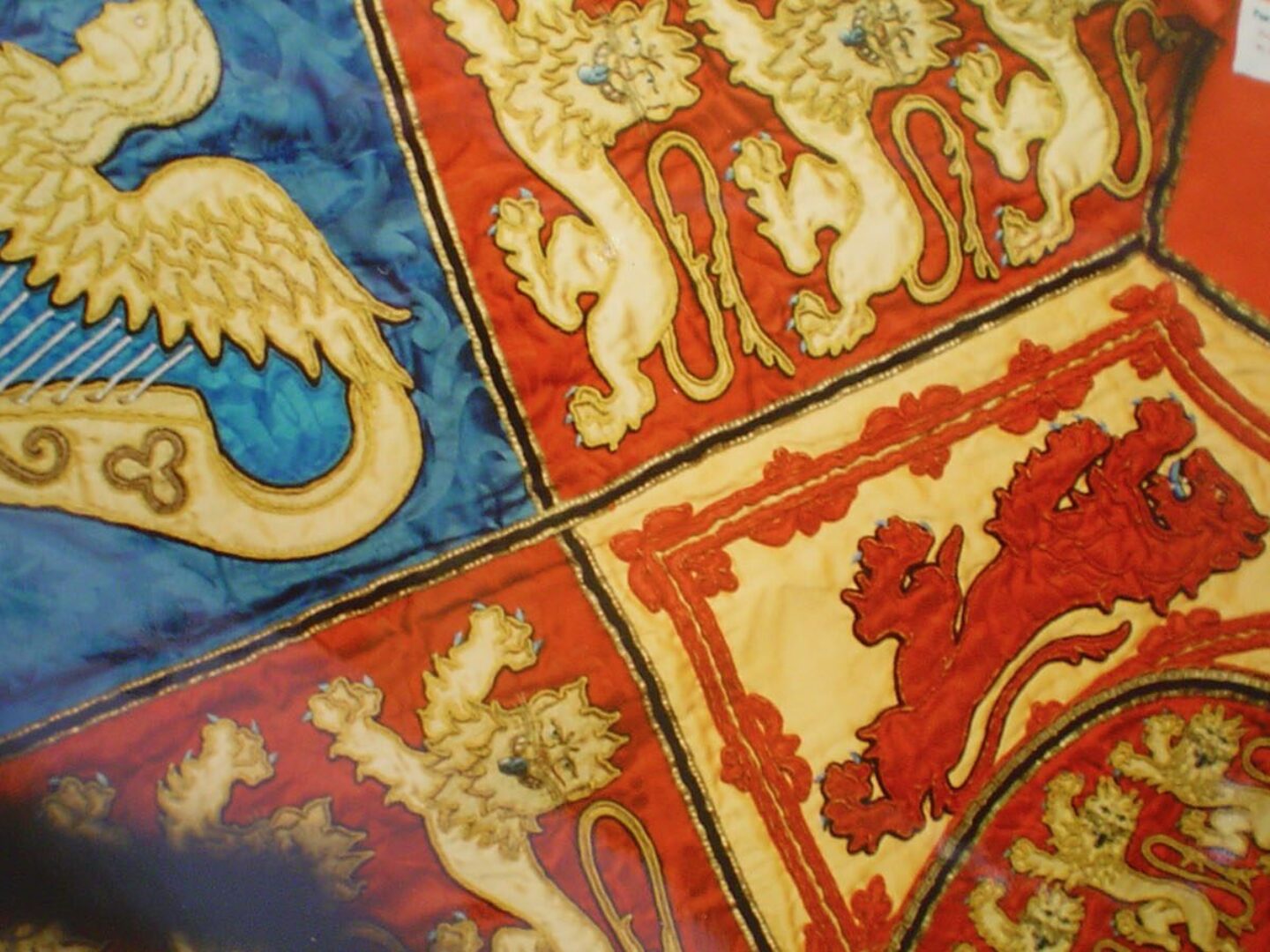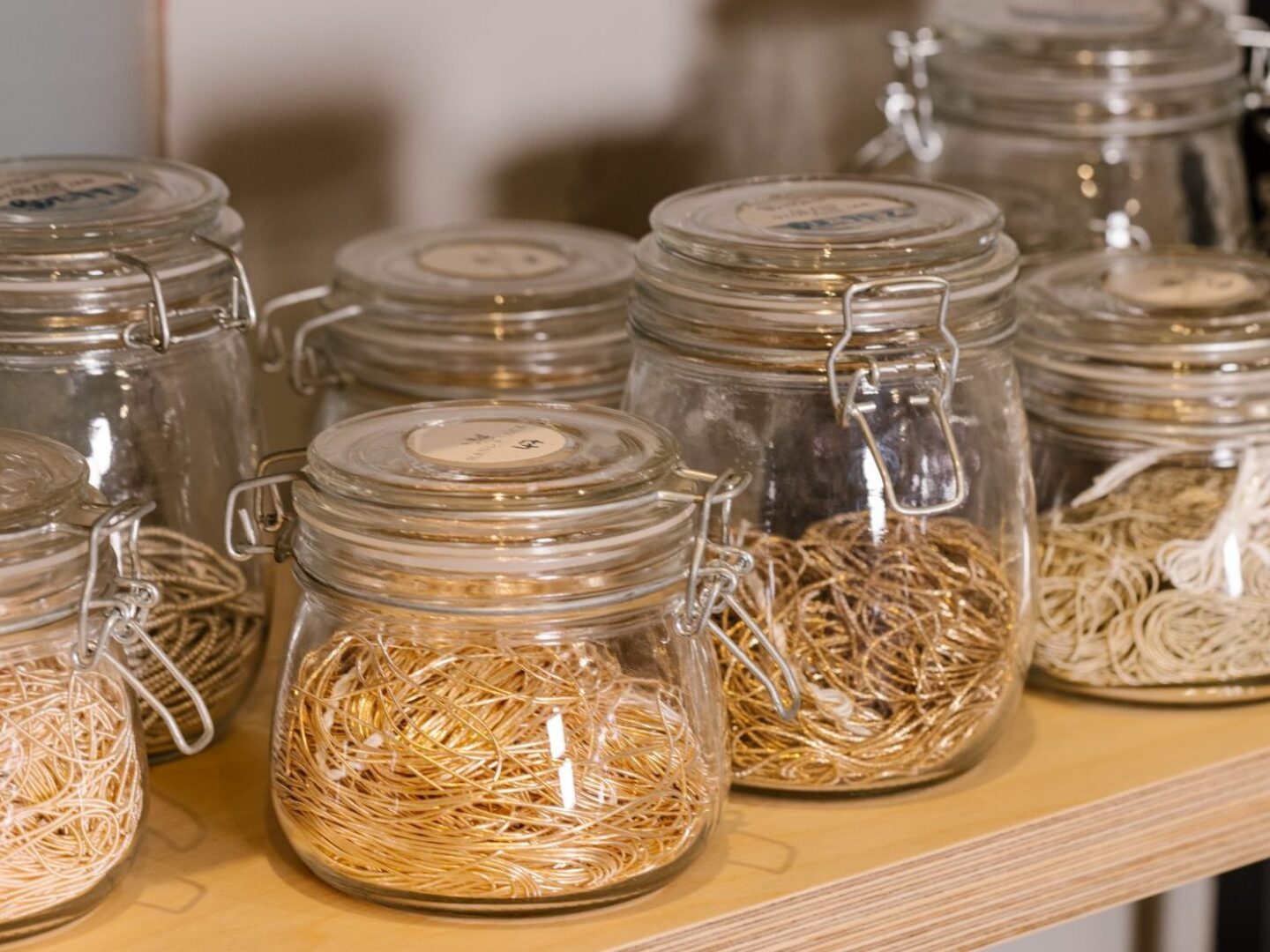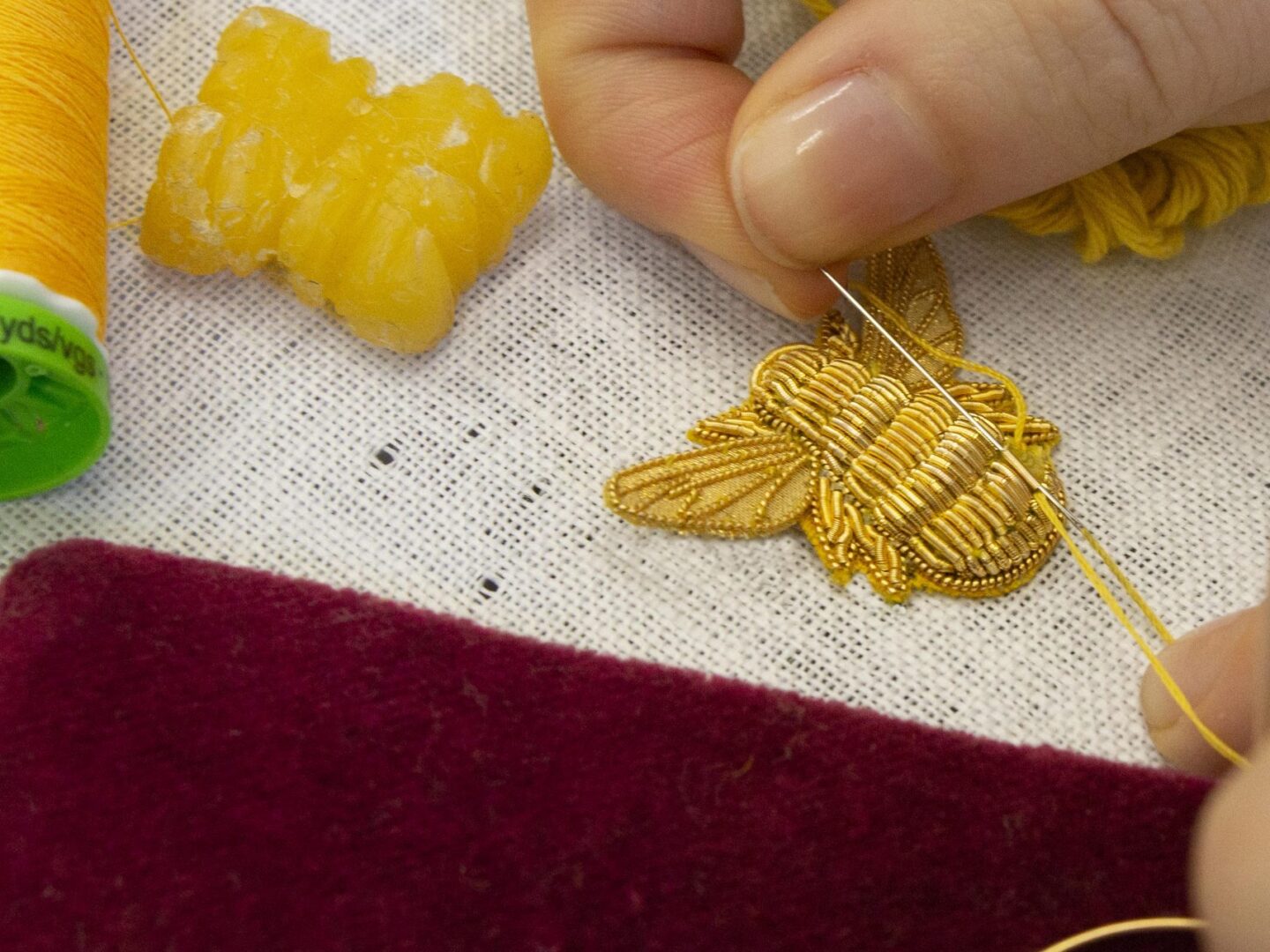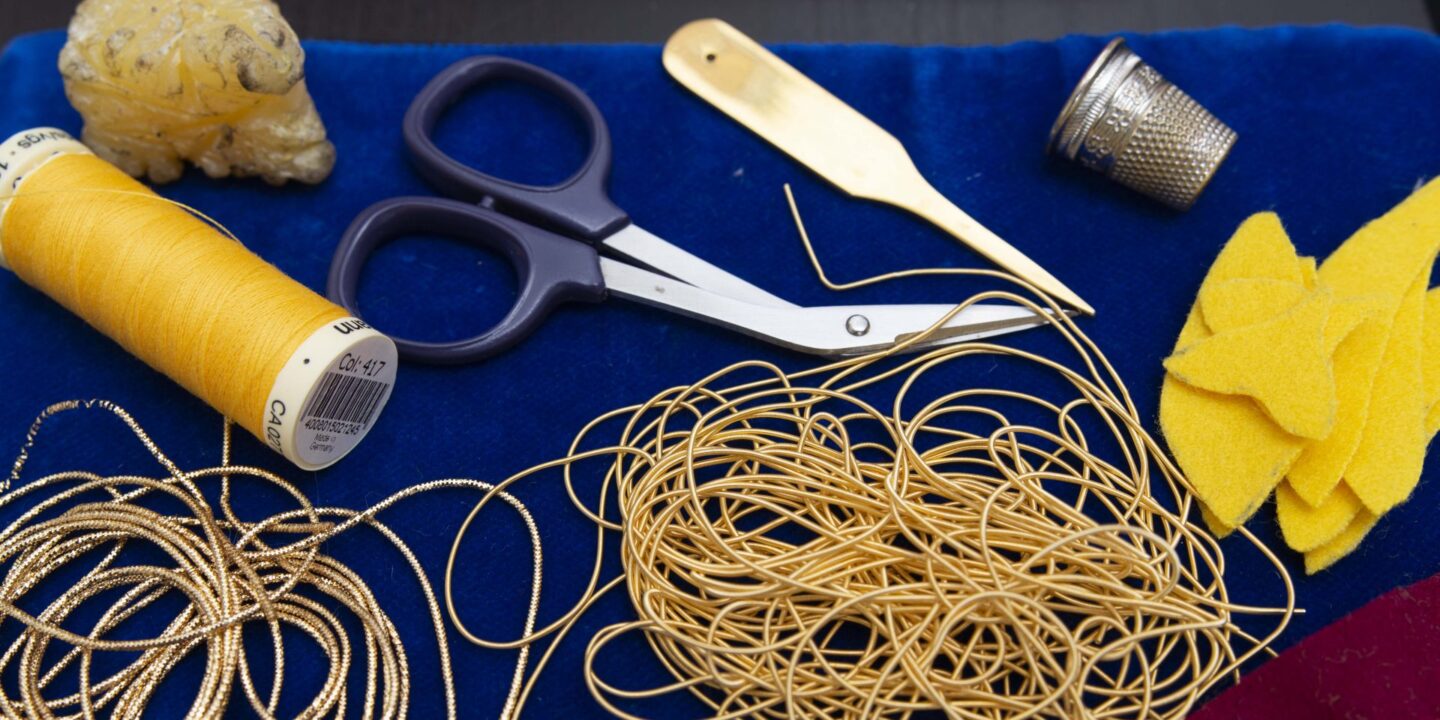

Goldwork is the historic embroidery technique where a skilled artisan embroiderer uses metal materials to create surface decorations. The technique is particularly prized for the way these decorations can reflect and engage the ambient light. In a church setting, this can make the cope worn by a priest appear alive with reflected candlelight.
Because of the skill, material and labour, goldwork is always synonymous with wealth, power and prestige.
In the military, government or royal court, exquisite craftsmanship, and careful ornamentation denote the wearer as someone powerful or important.
As a precious metal, gold has been used in personal ornamentation, decoration and clothing of the elite since Ancient Egypt and Mesopotamia.
Its use clearly goes back 4000 years with countless examples found in burial chambers.
However, gold’s origin within the practice of embroidery is harder to historically pinpoint.
Perhaps, this is because goldwork itself is a nebulous art form that includes many sub-disciplines and has evolved over time.


Goldwork as a form of embroidery actually comprises multiple techniques, a variety of tools and an array of different materials. Collected together, the common factor is the application of metallic surface decorations.
Within this spectrum of materials, we have smooth purl, rough purl, pearl purl, plate, passing and many more. Each is effectively the metallic embellishment that is appliquéd to the surface. And each offers a different lustre, shine and response to light.
Skilled and experienced goldwork embroidered can combine these different textures to build patterns and images that come to life on a textile.
With each different material, techniques must differ. An embroidered would need to know cutwork to apply smooth purl and be skilled in couching to lay passing. These different techniques are often material-specific and might even require specialist tools.
Beyond different-sized needles, this could include a mellor, tweezers and beeswax to lubricate the threads.
Some materials, techniques and tools cross over into other embroidery disciplines making some forms of historic goldwork harder to identify. While we have a fairly clear idea of what goldwork is today, that hasn’t always been the case.


The modern collection of materials, techniques and tools has undoubtedly changed over the centuries. Some techniques, such as underside couching, had their moment in the spotlight in the middle ages before declining.
Between 1200 and 1400, when the underside couching technique was developed, Britain was known around the world for ‘Opus Anglicanum’ religious and ceremonial embroideries. The simple stitch created a hinge in the passing and allowed for the lavish application of gold embellishments without stiffening the garment. The final effect was embroidered materials that moved like liquid, reflecting the candlelight and creating a sense of religious awe.
However, as the church became less ostentatious and the world became more industrialised this technique became less impactful.
Underside couching was just one evolutionary technique in a progressive path going back nearly 2000 or even 3000 years. Scholars agree that goldwork was practised in Asia by the Eastern Han Dynasty (202 BC – 8 AD). But some archaeological evidence suggests ornamental gold silks were made almost 1000 years earlier in the same region by the Shang Dynasty.
At this point in the distant past, material evidence is rare due to the ephemeral and delicate nature of textiles.
And we also have to contend with the shifting concept of goldwork. In China, 3000 years ago, the vast array of embroidery techniques that comprise the modern idea had yet to be developed. Weaving gold threads into a textile is not considered goldwork now, but was part of the way gold was used then. In short, the collection of disciplines and techniques was different to our modern definition. The application of gold wires to the surface of a garment was akin to weaving gold threads into cloth. Two very different disciplines by modern standards.
The final effect was embroidered materials that moved like liquid, reflecting the candlelight and creating a sense of religious awe.
As the techniques have evolved and refined the application of goldwork has become embedded in specific areas of national costume. Modern goldwork is found on ceremonial uniforms, flags, high fashion and religious attire. It remains a signifier of wealth and power because of the skill and labour involved. Typically, we now encounter goldwork at military parades, on costumes at government buildings, in churches or on catwalk runways.
Since 1767, Hand & Lock have been the preeminent specialists in European goldwork designing and producing insignia and accoutrements for the military, ceremonial laces for official occasions and original and bespoke goldwork designs for the royal family.
The London studio is home to a vast goldwork archive that allows designers to take inspiration from centuries of design for reproductions and historically accurate artworks.
Pioneers of new materials, Hand & Lock has a vast collection of modern coloured bullions that allow for more contemporary goldwork designs for fashion. Coloured bullions often consist of a fine-coloured thread wrapped around a metal wire, which is then wound into a coil ready for cutwork.
Keen to promote and sustain the practice, Hand & Lock operate classes teaching the art of goldwork for anyone that is interested.
Students learn the history of goldwork, practical steps to complete their own projects and insider tips to make their work look professional.
Goldwork has been practised around the world for thousands of years. By learning more about the art today and by teaching the ancient craft, it can be preserved for generations to come.

